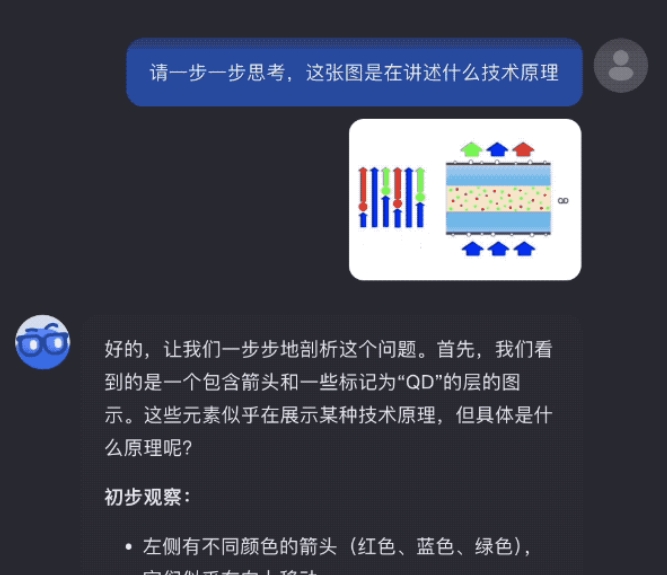Dark Side of the Moon Company today released a new visual thinking model k1, which is based on reinforcement learning technology and has made significant breakthroughs in image understanding and reasoning. The k1 model not only supports end-to-end image understanding, but also integrates thinking chain technology, extending its application scope to basic science fields such as physics and chemistry, and surpassing the world's leading models in multiple benchmark tests. Its innovation lies in the integration of image understanding and thinking ability. Users can directly input image information and obtain answers without resorting to external tools, which greatly improves interaction efficiency and user experience.
Dark Side of the Moon today announced the release of a new visual thinking model k1. This model is based on reinforcement learning technology, which not only supports end-to-end image understanding, but also integrates thinking chain technology, extending its capabilities to more basic science fields besides mathematics, including physics and chemistry. In the benchmark capability test, the k1 model outperformed the world's leading benchmark models, such as OpenAI's o1, GPT-4o and Claude3.5Sonnet.
The new generation model stimulates the generation of more detailed reasoning steps to form a high-quality thinking chain, significantly improving the success rate of solving complex tasks. The integration of Kimi's k1 model in image understanding and thinking capabilities provides users with a smoother interactive experience. It can directly process the image information input by the user and obtain answers without resorting to external OCR or additional visual models.

The training of the k1 model is divided into two stages. First, the basic model is obtained through pre-training, and then post-training through reinforcement learning is performed on this basis. The basic model achieved an excellent score of 903 on OCRBench and performed outstandingly on the MathVista-testmini, MMMU-val and DocVQA benchmarks. Post-reinforcement learning training is optimized in terms of data quality and learning efficiency, achieving new breakthroughs in scale.
Kimi has also independently constructed a standardized test set, Science Vista, covering mathematical, physical and chemical picture questions of varying difficulty, and will be open to the entire industry. Although the k1 model has shown some limitations in internal tests, such as room for improvement in out-of-distribution generalization and success rate on complex problems, its performance in visual noise scenes is better than other models, showing super strong visual recognition ability.
The k1 visual thinking model of Kimi intelligent assistant not only performs well in the field of mathematics, but also extends to the fields of physics and chemistry, demonstrating a wide range of basic scientific capabilities. In addition, the k1 model has demonstrated a general ability to explain and reason about non-mathematical problems, such as the content and backstory of a scientist's manuscript.
Kimi Smart Assistant looks forward to exploring a larger world with users. The new k1 model has been launched. Users can experience this new feature through the latest version of Kimi Smart Assistant mobile APP or web version.
Kimi's k1 model has performed well in many benchmark tests, demonstrating its strong visual thinking ability and broad application prospects. Although there are still some areas for improvement, its breakthroughs in image recognition and scientific question answering will undoubtedly bring new development impetus to the field of artificial intelligence. Users are welcome to experience the new interactive experience brought by the k1 model!